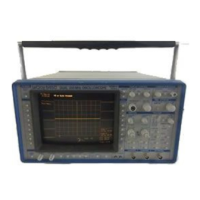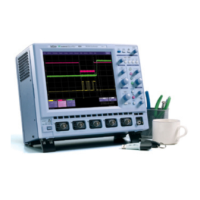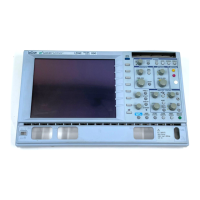About Remote Control 2
Header path
Example
Data
Some command/query mnemonics are imposed by the IEEE
488.2 standard. They are standardized so that different instru-
ments present the same programming interface for similar
functions. All these mnemonics begin with an asterisk <*>, e.g.
the command "*RST" is the IEEE 488.2 imposed mnemonic for
resetting the instrument, whereas "*TST?" instructs the instru-
ment to perform an internal self-test and to report the outcome.
Some commands or queries apply to a sub-section of the oscillo-
scope, e.g. a single input channel or a trace on the display. In such
cases, the header must be preceded by a path name that indicates
the channel or trace to which the command applies. The header
path normally consists of a 2-letter path name followed by a colon
<:> which immediately precedes the command header.
Usually one of the waveform traces can be specified in the header
path (refer to the individual commands listed in Section 5 for de-
tails on which values apply to a given command header):
C1, C2
Channels 1 and 2
C3, C4
Channels 3 and 4 (in 4-channel instruments)
MC, MD
Memory C and D
FE, FF Function E and F
EA, EB
Expand A and B
EX, EX10 External trigger
CI:OFST -300 MV Set the offset of Channel 1 to
-300 mV
Header paths need only be specified once. Subsequent commands
whose header destination is not indicated are assumed to refer to
the last defined path. For example, the following commands are
identical:
C2:VDIV?; C2:OFST?
C2:VDIV?; OFST?
What is the vertical sensitivity and
the offset of channel 2?
Same as above, without repeating
the path.
Whenever a command/query uses additional data values, they are
expressed in terms of ASCII characters. There is a single excep-
tion: the transfer of waveforms with the command/query
"WAVEFORM", where the waveform may be expressed as a se-
quence of binary data values. Refer to Section 6 for a detailed
explanation of the format of waveforms.
ASCII data can have the form of character, numeric, string or
block data.

